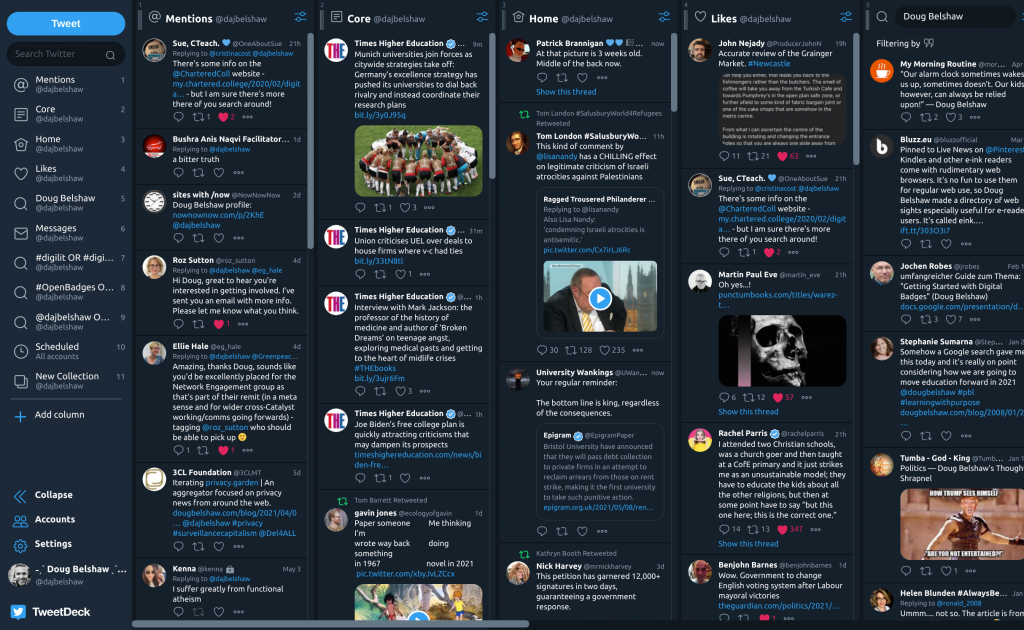3 ways to gain control of your Twitter feed

Aral’s post Hell site reminded me that, while I’ve talked about deactivating and reactivating my Twitter account several times, I haven’t mentioned ways in which I’ve found to battle the algorithmic timeline.
What is an algorithmic timeline? Let me try and explain.
What you think happens when you tweet: “I have 44,000 people following me. When I write something, 44,000 people will see it.”
What actually happens when you tweet: Your tweet might reach zero, fifteen, a few hundred, or a few thousand people.
Based on what?
Fuck knows.
(Or, more precisely, only Twitter, Inc., knows.)
So an algorithmic timeline is a black box that filters reality and decides who gets to see what and when based on an entirely arbitrary set of criteria determined by the corporate entity it belongs to.
Aral Balkan
Just to say in passing that it makes entire sense from the software-with-shareholders’ point of view to have an algorithmic timeline. It allows them more control over what people see, and ensures both that people with few followers still see plenty of stuff, and people with lots of followers don’t get overwhelmed.
It’s now almost seven years since I published Curate or Be Curated at the time when Twitter was about to introduce their algorithmic feed:
There has been a lot of discussion (and anger) over Twitter’s proposals to turn what is currently a “raw” feed into an algorithmically-curated feed. In other words, they’re taking Facebook’s approach of showing only updates in which they decide you’re likely to be interested. For advertising-funded services with shareholders, attention conservation is an important thing. If they want to mix in advertising to make it seem more “natural” and “organic” they have to ensure that you don’t miss it as you follow and friend more and more people. The same goes with email, which is one of the reasons Google segmented the inboxes of users of its Gmail service last year. They’ve recently started selling advertising space in the ‘Promotions’ tab. Twitter has promoted tweets. Facebook holds updates at the top of your stream longer if they mention keywords being paid for by their advertisers.
Doug Belshaw
Thankfully, at the time of writing, there are at least three things you can do about this. You can reject algorithmic feeds by doing one or more of the following things.
1. Turn on latest tweets
Thankfully, Twitter actually still allows you to switch from the default algorithmic timeline to show ‘latest tweets’. Of course, they’ll sneakily switch it back when you’re not looking, but at least the option is there.

2. Use TweetDeck with lists
TweetDeck is an independent, third-party client that Twitter acquired. It’s a powerful view, although it can all get a little bit overwhelming when the ‘following’ column moves quickly, but you can solve this by using Twitter Lists. As you can see in the screenshot below, I have a list (that I really need to update) called ‘Core’.

3. Turn on notifications for individual accounts
While not a scaleable solution, if there are certain accounts from which you want to see every tweet, you can choose to be notified in your Notifications feed.

So there we are! It’s sad that we have to find ways to defeat the algorithms, but either we do the curating, or machines do it for us. And I know what I prefer…
Header image by visuals

Absolutely lists in Tweetdeck is the way to go. Follow lots of people, but don’t read them all. In fact, I try to avoid the public timeline at all costs.